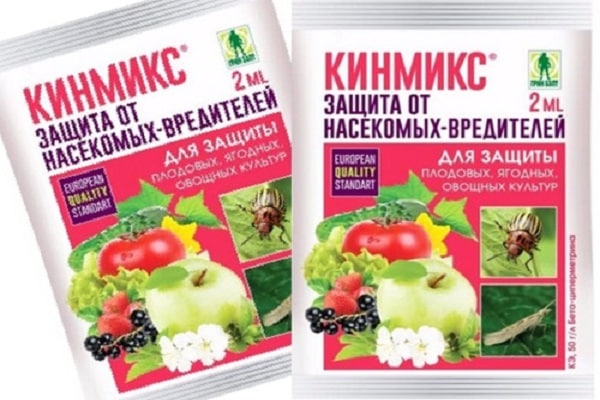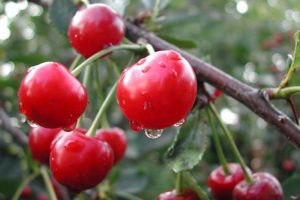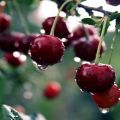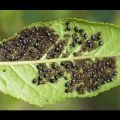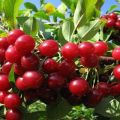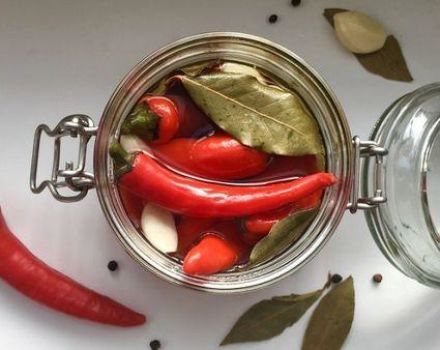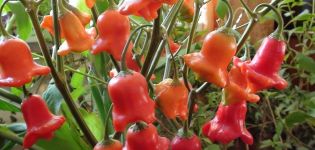Description of varieties of felt cherries, planting and care, propagation by cuttings and pruning
Felt cherry, like all other varieties of cherry trees, belongs to the genus Plum. The variety is crossed with other fruit trees of the Plum genus. The homeland of the felt cherry is the territory of China, therefore this variety is also called the Chinese cherry. The tree gives a stable harvest and is often used as an ornamental crop to decorate gardens.
Features of the variety
Even for novice gardeners, it will not be a problem to grow felt cherries in their area. In China, Mongolia and Korea, the species grows wild. It was from there that the cherry was brought to other countries. At the end of the 19th century, the variety came to the territory of Russia.
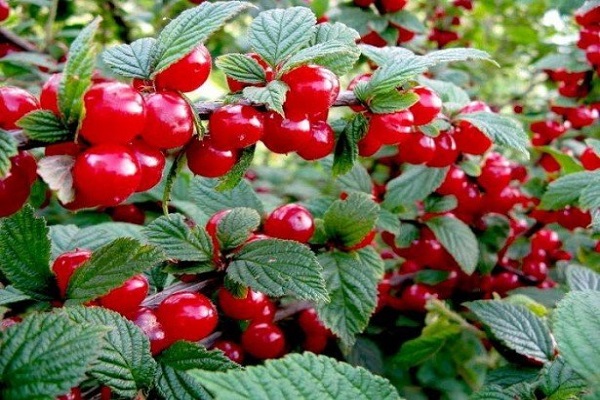
Of the shortcomings, the life span of the plant should be noted. The duration of fruiting of felt cherry is no more than 9-10 years. But if you carry out anti-aging crown pruning every 4 years, then you can extend the life of the tree up to 20 years.
Among the features of the variety are:
- Felt cherry, unlike other varieties, propagates by seed.
- Berries have a high level of B and PP vitamins.
- In terms of the level of iron in berries, felt cherries are ahead of apples.
- The level of ascorbic acid in berries is several times higher than that in other varieties of cherries.
Felt cherries are rich in beneficial trace elements. It is easy to grow and with proper care the tree produces bountiful crops every year.
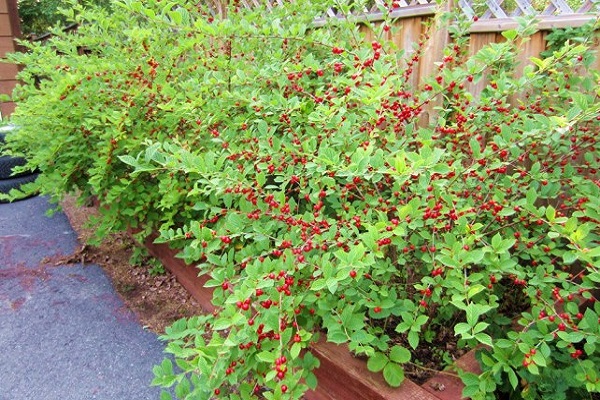
Varieties
Chinese cherries are divided into several varieties depending on the speed of fruit ripening. There are three types:
- Early ripe.
- With an average term.
- Late.
Depending on the climatic zone of tree growing, the timing for the same species is different.
Felt cherry varieties
In Latin, the felt cherry is called Prunus or cerasus tomentosa. Among the popular varieties of this variety, the Felt Princess, the productive Kuril and Damanka varieties are distinguished. The varieties differ in terms of crop ripening, yield and fruit weight. In general, there are no significant differences.
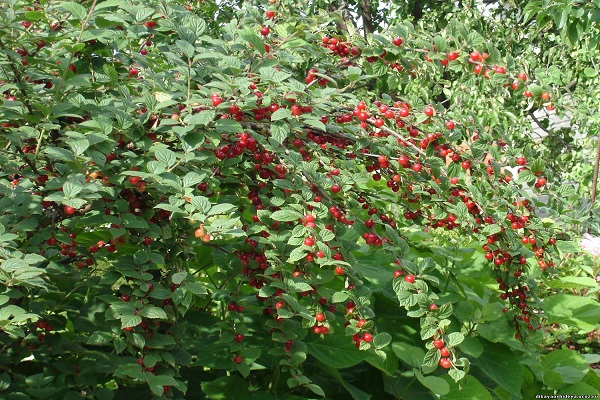
Early varieties of felt cherry
Among the early varieties are:
- Far Eastern Beauty begins fruiting in the 3-4th year after planting seedlings in open ground. Up to 5 kg are harvested from one adult tree. The variety is photophilous; in the shade, fruiting decreases. The tree is undemanding to the soil.
- The Natali Chinese cherry has a strong crown, medium thickening.Ripe berries with a rich red hue. It tastes sweet and sour. The mass of one berry is 4-5 g. The pulp is dense, after harvesting in the refrigerator it is stored for up to a week. Up to 7 kg are harvested from one tree.
- The Delight variety is self-fertile. The tree reaches a height of 1.5 m. The berries are large, weighing up to 4 g. The shade of the berries is red-scarlet. The pulp of the fruit is juicy, with a sweet and sour aftertaste. Not intended for long-term transportation.
Early varieties are among the first to bear fruit among all fruit trees.

Average
varieties with an average ripening period include:
- The Salut variety belongs to tall ones. At Salut, the main trunk reaches 2 m in height. The berries ripen in July. Fruits are oval, juicy, sweet and sour. The bone is small. The advantage of the variety is frost resistance.
- Cherry Smuglyanka Vostochnaya belongs to undersized varieties. Berries are dark burgundy, weight up to 3 g. The surface of the leaves is velvety to the touch.
- The Yubileiny variety belongs to the Ussuriysk. The tree is shaped like an oval. The crown is not very thickened. The berries are reddish, weight 3-4.5 g. The yield is up to 8 kg.
Medium varieties ripen in July.
Late
The late varieties include the Okeanskaya Virovskaya variety. The plant is compact. Burgundy berries. Weight from 3 to 4 g. Fruits without stalks. The berries have a sweet taste with a sour aftertaste. Up to 9 kg of berries are harvested from one adult tree.
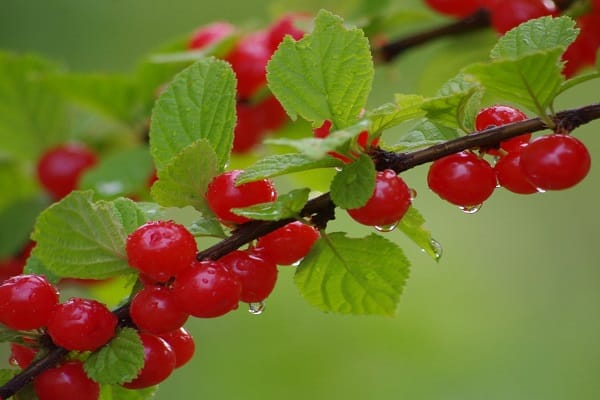
Care rules and landing
Felt cherry, like most varieties of cherry trees, belongs to unpretentious varieties that do not need special growing conditions. To increase yields, it is recommended to follow the simple rules of agricultural techniques for planting and caring for trees. In general, growing a tree will not give big trouble to summer residents.
Landing
One of the important stages at which the further development of cherries is determined is planting. With proper planting, the tree begins to bear fruit much earlier and gets sick less during adaptation to a new place. Growing cherries in the country is quite simple.
For planting, it is advisable to purchase 1-2 year old tree seedlings. The optimal planting time is spring and autumn. Saplings planted in spring before bud break out best of all. In autumn, seedlings should be planted before the end of September. If planted later, the seedling will not have time to take root in a new place and will die during frosts. Those seedlings that were purchased in October should be reliably dug in before spring comes.
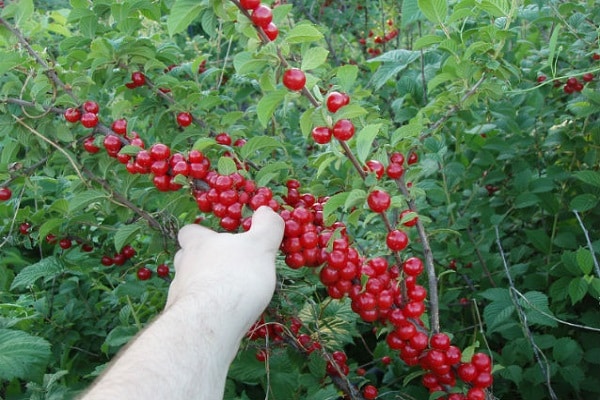
Stages of planting seedlings in open ground:
- Dig a hole at least 50 cm deep and about 60 cm wide.
- Then add the soil mixture to the soil and mix thoroughly (at least 3 buckets of organic fertilizers, 450-850 g of lime, 45-65 g of phosphorus, 25-35 g of potassium).
- Cherry roots are cut 20-30 cm and smeared with a clay mixture.
- Then plant the seedling in a hole and bury it.
- The root collar of a cherry must not be buried; this can lead to the death of the seedling.
- After that, compact the soil around the trunk and pour abundantly with warm water.
- At the end of planting, mulch the soil around the seedling with peat or any organic fertilizers.
It is undesirable to plant more than 3 trees in one area. There will be little space for them, and the cherry will begin to grow poorly, and will cease to give a good harvest.
Top dressing
How to feed cherry trees after harvest:
- The first fertilizer is applied immediately after harvest. Top dressing is applied along the edge of the trunk circle with 4-6 kg of organic matter, 15 g of potassium, 30 g of nitrogen and 65 g of phosphorus.
- Before the onset of winter, any fertilizing is applied, except for nitrogen-containing ones.
Lime must be added to the soil every 4-5 years.
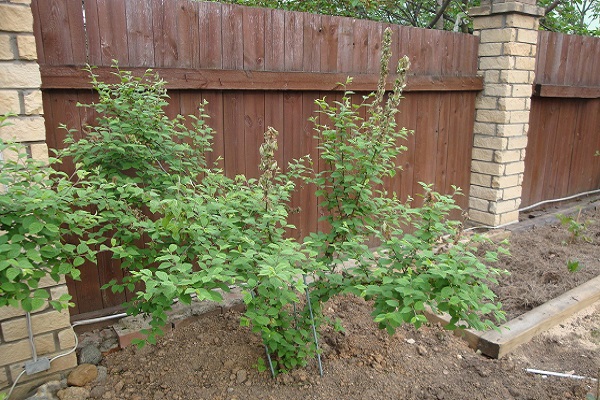
Watering
Cherry does not like waterlogged soils, so it is often not advised to water it. One watering per week is enough. If the summer is dry, you can water it 2-3 times.
Crown formation
After spring has come, the tree is pruned.Formation is carried out every year. During pruning, 10-12 healthy shoots are left. Annual branches, on which the bulk of the crop is concentrated, are cut by 1/3, unless they are more than 60 cm long.
To activate the growth of the tree, rejuvenating pruning is carried out every 4-5 years. During this procedure, the center of the crown and skeletal branches related to the peripheral are cut off. For convenience, you can draw a cropping scheme.

How to prune during anti-aging pruning:
- Several lateral cherry shoots are cut into a "ring".
- Then, one-year young shoots should appear near the shortening site.
- All stems over part of the old crown should be trimmed.
Frozen trees are cut by the same principle.
Ripening dates of fruits
After planting felt cherry seedlings, the question arises when to harvest. Depending on the variety, the ripening period of berries is different.
The main harvest begins in the summer in July. Early varieties ripen in mid-June. In the fall, only late varieties are harvested, provided that they were grown in the southern regions.
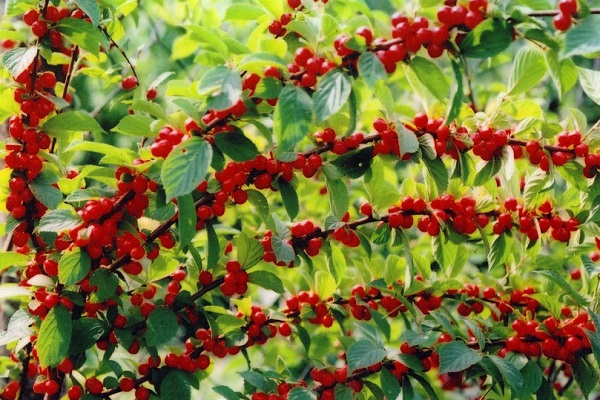
Reproduction of felt cherries
The main breeding method for felt cherries is considered to be seed. This distinguishes the variety from other varieties of cherries. It is almost impossible to grow any other variety from a seed without special skills and experience. But you can also try to grow a seedling by layering and cuttings.
Seeds
The easiest way to grow felted cherries is by bone. For the seed method, you need to rinse the seeds under warm water and dry them in the shade at home. In the last days of August, the seeds are mixed with wet sand and the containers are removed to a cool place. In October, seeds are sown in beds to a depth of no more than 3 cm. It is recommended to cover the grooves with spruce branches or foliage.
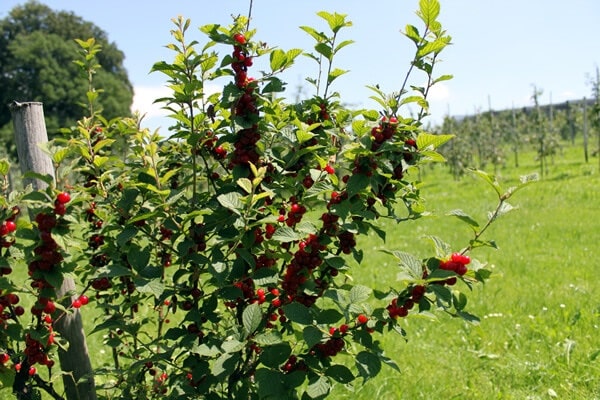
With the onset of spring, cherry seedlings appear on the beds. With well-organized care, the sprouts grow quickly and in the first year can exceed a height of 40-55 cm. With the onset of autumn or next spring, the seedlings are planted around the site.
Cuttings
Cutting is more difficult than pitting cherries. To do this, you must have certain gardening skills and create special conditions for the cuttings.
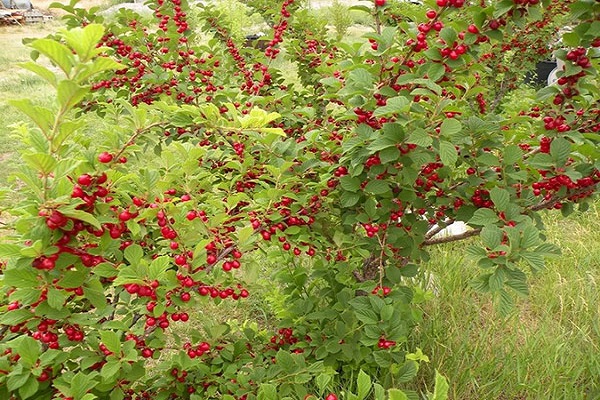
Cuttings are cut from shoots 7 to 16 cm long from branches of this year belonging to the second or third level. They are cut with a small part of last year's wood, no more than 2 cm. Then the cutting is treated with a growth activator and placed in the soil. 2 cm of a piece of wood and 1 cm of a green cutting are covered with earth.
Then the bed with cherry cuttings is covered with a film. After the cuttings are buried, care should be taken to keep them out of sunlight. Therefore, the beds are best done in partial shade. They also maintain constant soil moisture. The soil should not dry out.
Layers
Another breeding option for felt cherries is with the help of layering. To do this, you need to put last year's green shoot in a small hole in the spring and pin it on.
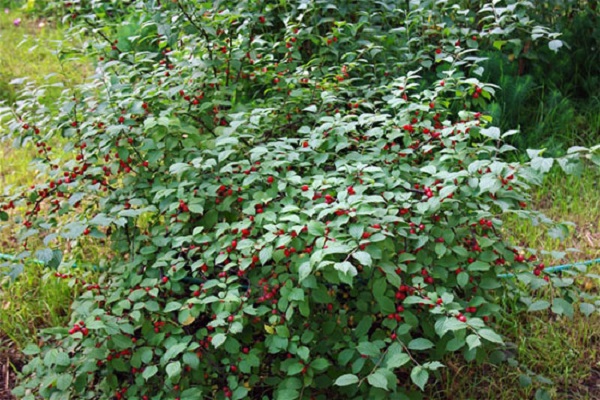
Diseases and pests
Diseases of agricultural crops and pests can significantly reduce the yield of cherry trees. To prevent the appearance of diseases and insects on trees, they are regularly examined, and if there are signs of the appearance of pests or diseases, then measures are immediately taken. The sooner the fight starts, the less significant the damage to the trees will be.
Moniliosis or monilial burn
Most varieties of cherry trees are prone to coccomycosis. But this variety often suffers from moniliosis. This is a fungal disease that affects trees during flowering. The spores of the fungus penetrate into the pistil and begin to multiply rapidly there. Then the mycelium begins to develop and through the stalk enters the branches, gradually penetrating into the wood and destroying it.By early June, the tree dries up almost completely.
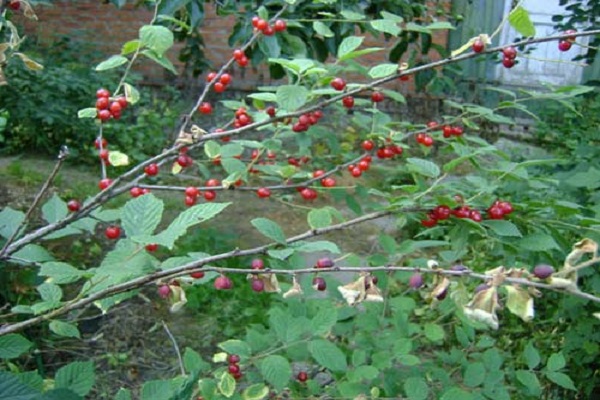
Most often, monilial burn occurs in regions with rainy spring and summer. To prevent the appearance of fungus in the spring during the swelling of the buds, trees are sprayed with a 3% solution of Bordeaux liquid or copper sulfate. After a few weeks, treat the trees with copper-containing chemicals.
Clasterosporia or perforated spot
Hole spotting refers to fungi. The disease is characterized by the appearance of rusty spots and holes on the foliage. The disease spreads quickly, and in a few days, one tree can infect an entire garden. To prevent the appearance of spotting, every year they dig up the soil around the trunk circles. It is also important to feed the plants.
Before bud break, trees are sprayed with Bordeaux liquid. Spraying is carried out in the fall. During the growing season use the drug "Cuproxat" and "Skor".
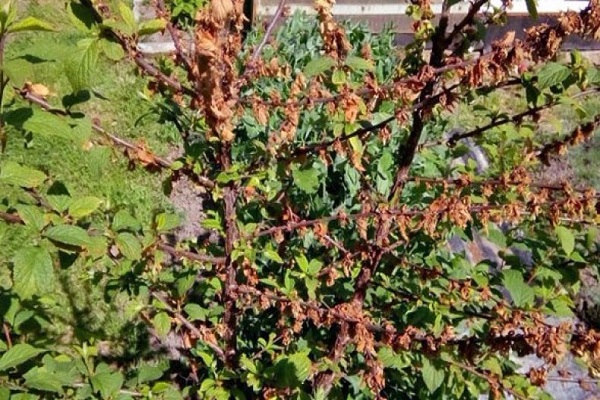
Kokkomokiz
In early spring, trees are sprayed with copper-containing preparations. For example, "Abiga Peak" or "Hom". When buds appear, cherries are treated with Horus. 2-3 g of the drug is diluted in 10 liters of water and sprayed on trees. After flowering, cherries are treated with this preparation again. In addition to using chemicals, the trunks are regularly weeded and all weeds are removed, fallen leaves and berries are removed so as not to allow the fungus to develop.
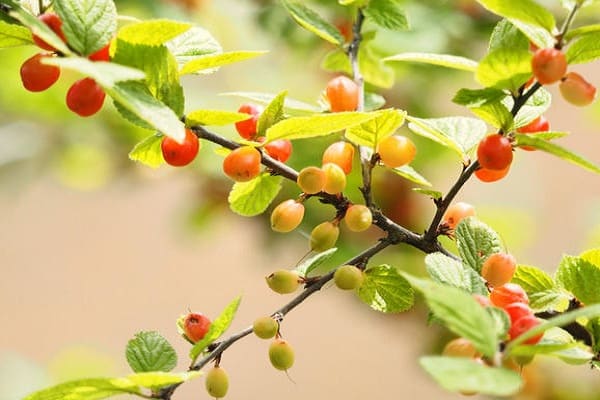
Pocket disease
To prevent the appearance of pocket diseases on cherry seedlings are planted in sunny and ventilated areas. In such conditions, fungal spores cannot develop. Cherries are also regularly cut to prevent thickening of the crown. Weak and diseased branches are removed.
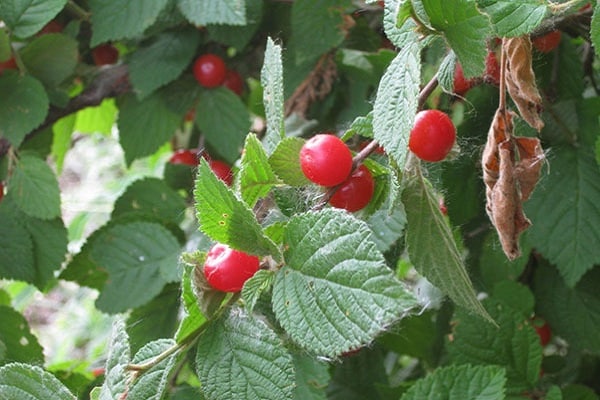
Pests
Most often, mice do a lot of damage to the tree. Mice gnaw on bark in winter. Damaged sections of the trunk can only be seen after the snow melts. To prevent mice from gnawing on the bark, in the fall, the trunks are covered with a metal mesh and poisonous traps are laid near the trunk.
The plum moth affects not only the plum. The larvae feed on the pulp of the berries. The fight against the moth begins immediately after butterflies have appeared on the site. If the summer is warm, the moth can breed several generations. With the onset of the flowering period, the trees are sprayed with Decis or Altar chemicals. The second processing is carried out at the end of July. Use "Kinmix" or "Karbofos".
To get rid of aphids, trees are sprayed with an ash solution or a solution of laundry soap. It is also important to get rid of the ants right away.
